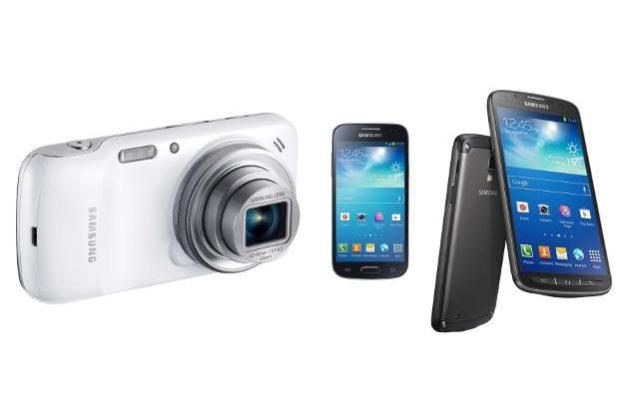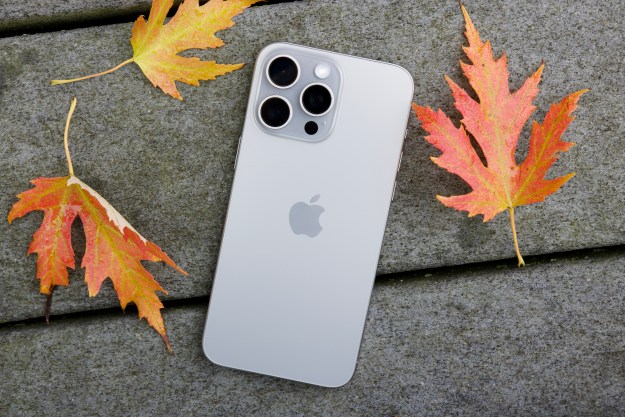
Do you want full fat, cream, half and half, or no-fat milk in your coffee? Do you want to “go large”? Do you want to take the kids to Despicable Me 2 or Monsters University? What kind of Listerine do you want (there are half a dozen varieties)? Is there something better on the other 900 channels? Wouldn’t you rather have what the guy next to you is having?
Too much choice can be painful. In fact, various studies over the years have highlighted the potentially debilitating effect of too much choice. In 1995, a famous study conducted by Sheena Iyengar, a professor at Columbia University, found something interesting. The researchers had a display where they alternated between 24 and 6 varieties of jam. Sixty percent of customers were attracted by the larger choice compared to 40 percent for the smaller choice, but only 3 percent bought from the bigger display, whereas 30 percent bought from the limited display.
Galaxy of choice
Could that succinctly explain the success of the iPhone? Obviously not, but it’s tough to escape the feeling lately that Samsung is offering smartphone consumers too much choice. Not content with flooding the market with a wide range of different devices with similar branding, Samsung is starting to muddy the phone waters even further with a dilution of its flagship brand name.
If you told someone now that you had the “latest Galaxy” that would still leave a lot of possibilities. Even if you told them you had the “latest Galaxy S4” it wouldn’t be clear what you meant. Is that the Google Edition, or are you taking about the Zoom camera version? Maybe it’s the Mini or the Active? What variety is coming next? Do we need, or want, all these choices?
Clogging my cognitive functions

A study on choice by Professor Kathleen Vohs of the University of Minnesota and others found that “Making choices led to reduced self-control (i.e., less physical stamina, reduced persistence in the face of failure, more procrastination, and less quality and quantity of arithmetic calculations).”
It takes something out of us when we have to make a choice. It’s a frustration most of us encounter regularly in everyday life and it’s exacerbated when the benefits of one choice over another simply aren’t clear. In the smartphone world carriers are the true masters of the vague and overly complicated choice, but Samsung’s hands are just as dirty.
If in doubt, flood the market
For a while it looked like Samsung might take a leaf from Apple’s book, and clearly delineate its flagship smartphone. The original Galaxy S series phone was released under various monikers with slight tweaks to satisfy carrier demand for a unique or exclusive release, but by the time the S3 came out, it was a single device that meant the same thing to everyone. If you stopped someone in the street and asked them what the flagship HTC was, or which Sony
Samsung looked all set to do the same with the S4, and did this April. But after only a couple months, it’s already fallen back into old habits, and ditched the sniper rifle in favor of a blunderbuss. The S4 didn’t live up to its unrealistic expectations, Samsung. Welcome to Apple’s iPhone conundrum. Don’t let that send you spinning back into over-release mode. Get a grip. Ask yourself – do these extra options strengthen the brand or erode it?
It worked in the past

It’s also worth pointing out that Samsung has thrown a lot of money at advertising. The company outspent all of its competitors last year. Kantar Media suggested Samsung spent $401 million in U.S. phone ads alone, and its worldwide advertising spend was in the billions. Is it succeeding because of the wide array of choice, or in spite of it?
The one versus the many
As my editor pointed out, the battle between Apple and Samsung is starting to look like the end of the last Matrix movie. It’s Apple’s one iPhone surrounded by a sea of Galaxy devices. We don’t agree with casting the iPhone as the hero, but you get the idea.
Is Samsung succeeding because of the wide array of choice, or in spite of it?
The next wave of flip phone holdouts that buy their first smartphone are likely to be the least tech-savvy, the least interested in having to sift through a galaxy of options. We have to question Samsung’s approach. At most points over the last few years you could ask “what’s the best Android
Editors' Recommendations
- Every Samsung gadget we still expect in 2024
- A surprise phone just beat the Galaxy S24 Ultra in a big way
- Samsung’s newest Android tablet is a perfect iPad alternative
- Have a Samsung Galaxy S23? Don’t update your phone to One UI 6.1
- A new version of the Samsung Galaxy S24 could be coming soon


